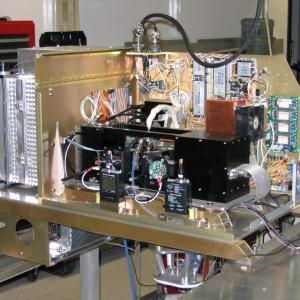The ORNL DAAC recently released the following Atmospheric Tomography Mission (ATom) dataset by Lamb, K., et al. (2021):
ATom: Light-Absorbing Metallic Aerosols, Single Particle Soot Photometer, 2016-2018
This dataset provides mass mixing ratios and number density of light-absorbing metallic aerosols (LAM) in the size range 180-1290 nm obtained with the NOAA Single Particle Soot Photometer (SP2) during the four deployments of the NASA Atmospheric Tomography (ATom) airborne mission from 2016-2018. The NOAA SP2 detects light absorbing aerosols, such as black carbon (BC), via laser-induced incandescence to provide real-time in situ quantification of refractory aerosol mass and number density. The percent of LAM aerosols attributed to anthropogenic iron oxides (FeOx) by mass is also provided.
The ATom mission deployed an extensive gas and aerosol payload on the NASA DC-8 aircraft for a systematic, global-scale sampling of the atmosphere, profiling continuously from 0.2 to 12 km altitude. Flights occurred in each of four seasons from 2016 to 2018.
The Atmospheric Tomography Mission (ATom) is a NASA Earth Venture Suborbital-2 mission to study the impact of human-produced air pollution on greenhouse gases and on chemically reactive gases in the atmosphere. ATom deployed an extensive gas and aerosol payload on the NASA DC-8 aircraft for systematic, global-scale sampling of the atmosphere, profiling continuously from 0.2 to 12 km altitude. Around-the-world flights were conducted in each of four seasons between 2016 and 2018.
Additional data from ATom and other relevant links can be found on the ORNL DAAC's ATom Project Page.
Citation: Lamb, K., J.P. Schwarz, and J.M. Katich. 2021. ATom: Light-Absorbing Metallic Aerosols, Single Particle Soot Photometer, 2016-2018. ORNL DAAC, Oak Ridge, Tennessee, USA. https://doi.org/10.3334/ORNLDAAC/1828

